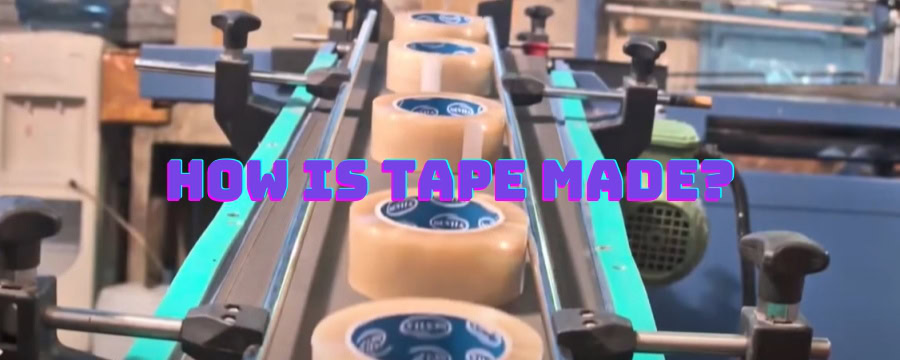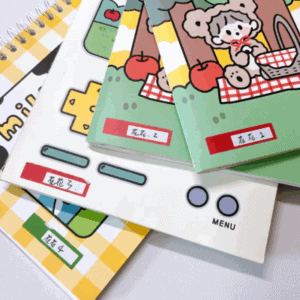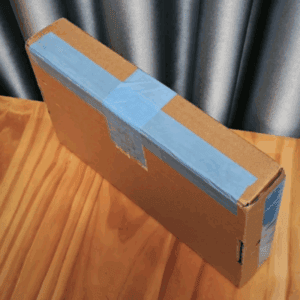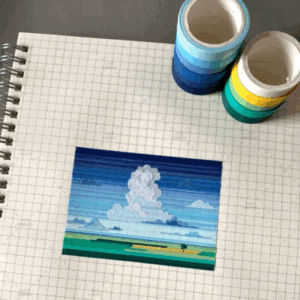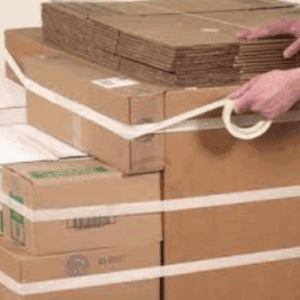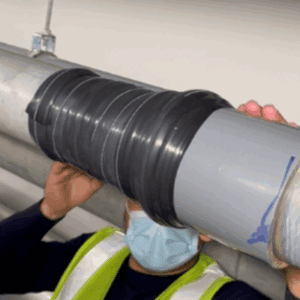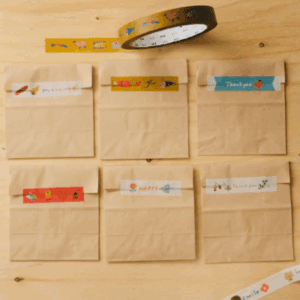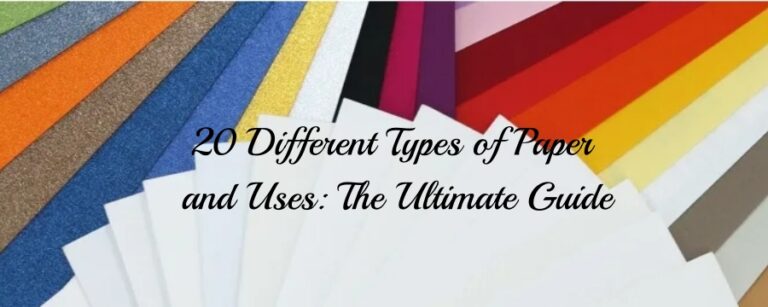introduction
How is tape made? Have you ever wondered about this question? From sealing express parcels to sticking posters, this little thing may seem simple, but the production process behind it is very interesting.
Today, let’s talk about the birth of tape. From raw materials to finished products, we will disassemble its production process step by step. Whether you are a stationery lover or a purchaser, I believe this article will give you a new understanding of tape!
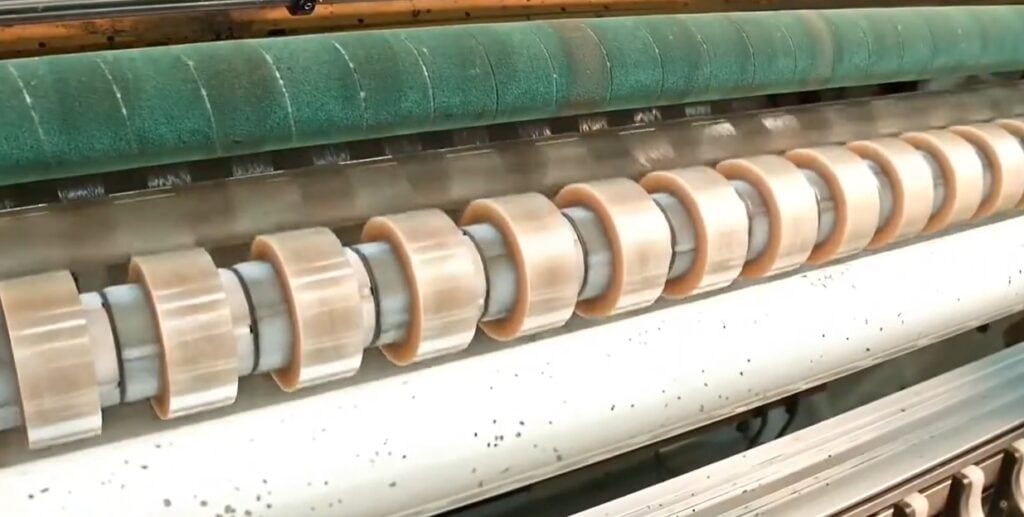
Materials for making tape
The quality and performance of adhesive tapes are largely determined by the materials used. Different substrates have different strengths and flexibilities, while the type of adhesive affects how well the tape sticks and how it performs under different conditions. For double-sided tapes, the release liner also plays an important role.
Here are the three key raw materials for tape manufacturing:
1. Base material (carrying layer)
BOPP film (most commonly used)
- Features: high transparency, tensile strength, low cost
- Thickness: 16-50μm (usually 25-30μm for office use, thicker for industrial packaging)
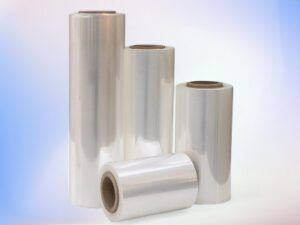
PVC film
- Features: good flexibility, suitable for curved surface pasting
- Application: electrical tape, warning tape
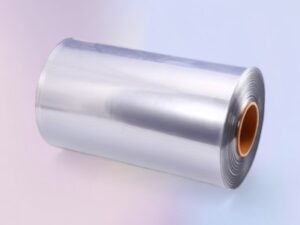
Kraft paper/masking paper
- Features: easy to tear, good writing performance
- Application: packaging sealing, inkjet masking
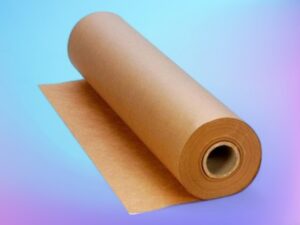
2. Adhesive (core functional layer)
Acrylic glue (mainstream choice)
- Acrylic glue is a synthetic adhesive with acrylic ester polymer as the main component.
- Advantages: aging resistance, high transparency
- Disadvantages: limited high temperature resistance and slow curing speed

Rubber-based glue
- Rubber-based glue is an adhesive with natural or synthetic rubber as its main component.
- Advantages: strong initial adhesion, good low-temperature performance
- Disadvantages: easy to turn yellow (not suitable for transparent tape)
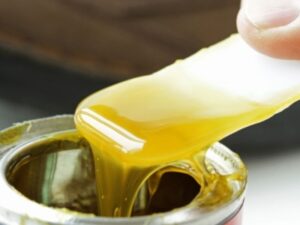
3. Release liners(for double-sided tapes)
Silicone oil coating
- Applied to the back of the substrate to prevent the tape from self-adhesion.
Coating amount
- 0.8-1.2g/m². Too little will cause adhesion, too much will increase costs.

The Tape Manufacturing Process: Step-by-Step
The production process of adhesive tape may seem simple, but to ensure that each roll meets the standards, each link needs to be strictly controlled. We analyze the four key steps of adhesive tape production from a professional perspective to help you better understand how tape is made.
1. Gluing process
Gluing is the core process that determines the stickiness of the tape. Apply the glue evenly on the substrate, usually with a thickness of 15-25 microns. Too thin is not sticky, too thick is a waste of cost.
The coated material will be dried, and the temperature is precisely controlled between 50-90℃ to cure the glue while avoiding performance damage fully.

2. Rewinding and shaping
The substrate after glue coating needs to be shaped through the rewinding process. Use a fully automatic tension control system to rewind the large roll of tape, ensuring flatness and no bubbles, and that the roll core is flat and tight.
This link focuses on solving possible curling and wrinkling problems and prepares for subsequent slitting.
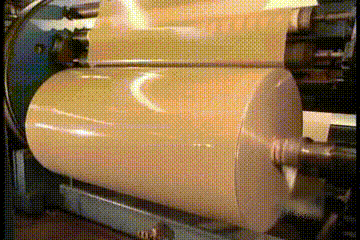
3. Precision slitting
According to customer needs, we slit large rolls of materials into different widths. Such as 12mm, 24mm, 48mm. Using precise slitting tools, the slitting process monitors the quality of the cut in real time to avoid problems such as burrs and flashes that affect the user experience.
The tape will be wrapped around the cardboard core, and the end of the tape will be sealed with a label, and then the machine will eject the prepared tape.
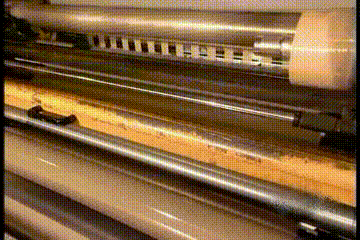
4. Quality Inspection
Each batch of products must undergo strict testing. The quality inspector unfolds the tape with the adhesive surface facing up, allowing the stainless steel ball to roll freely from the slope, and then measures the rolling distance of the ball on the tape.
The ball is considered to have passed the test only if it stops within a certain distance.

5. Packaging
Finally, the tape that passes all quality control checks, such as adhesion strength, durability, and appearance, is carefully packaged according to customer requirements, then delivered to customers around the world.

Uses of tape
Tape plays a vital role in all walks of life. It has a wide range of uses, whether in offices, warehouses, factories, or homes, it can be seen everywhere. From students doing handicrafts to logistics companies packing goods, tape is indispensable. Common transparent tape, packaging tape, and double-sided tape each have their unique uses. Here are some of the most common uses:
1. Office and school use
Sealing envelopes: Tape is most commonly used to seal important documents and correspondence.
Mending torn papers: Teachers and students use tape to quickly repair torn books.
Organizing books: Many offices use colored washi tape or masking tape to sort and mark documents.
2. Packaging and shipping
Sealing boxes: In the logistics industry, tape is mainly used to seal various packaging boxes and cartons.
Strengthening packages: When transporting fragile or valuable items, workers will use high-strength tape to reinforce the package with multiple layers.
Logistics Tamper-evident Security Tape: Important documents and valuables are transported with tamper-proof security tape.
3. Arts and Crafts
DIY projects: Craft enthusiasts often use tape to complete various DIY and creative projects, as well as scrapbooking.
Decorating books: Use patterned washi tape and printed tape to decorate notebooks, journals, and other items.
Masking for cleaning paintings or designs: When painting, artists will use masking tape to protect the edges of the picture and ensure a clean, creative area.
4. Industrial and warehouse use
Strapping materials: High-strength tape is often used to bundle packaging materials to ensure that the goods remain neat and stable during transportation.
Labels or color coding: Warehouse staff will use different colored tapes to classify and mark goods.
Temporary fixes or fastening items: Factories often use industrial tapes for temporary fixation and simple repairs of equipment.
5. Home use
Gift wrapping: Tape is often used to wrap gifts to make them look more exquisite.
Hanging lightweight items: When small damage occurs to items at home, tape can provide a quick and effective temporary repair.
Quick fixes: Tape can be used to hang lightweight items such as photos and decorative paintings, which is convenient and will not damage the wall.
Choosing the Right Tape
Choosing the right tape can greatly improve the efficiency of work and life. First, determine the type of tape according to the specific purpose of the tape, such as sealing, fixing, decoration, etc., and then consider key factors such as viscosity, material, size, etc., and choose the most suitable tape based on budget and customization. Here are some key things to keep in mind when making a decision.
1. Application
Offices and schools usually use transparent tape, washi tape, and double-sided tape.
BOPP packaging tape, kraft paper tape, and reinforced tape are usually used for packaging and transportation.
Crafts and decorations usually use washi tape and colored masking tape.
Foam double-sided tape and strong tape are usually used for installation and fixing.

2. Viscosity requirements
Temporary fixation can use low-viscosity tape.
Permanent bonding requires high-viscosity professional tape.
Special surfaces (such as plastics and metals) should be used with special adhesives.
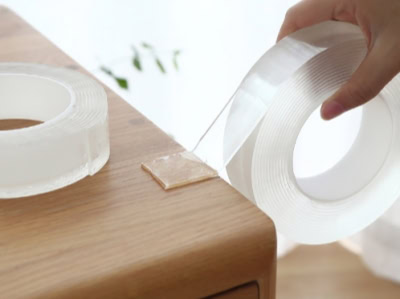
3. Size specifications
Choose the appropriate width according to the usage scenario, and the common width is 12 mm- 72 mm.
Consider the length requirements, standard rolls, or large-capacity industrial packaging.
Special shape requirements, such as double-sided tape and foam tape.
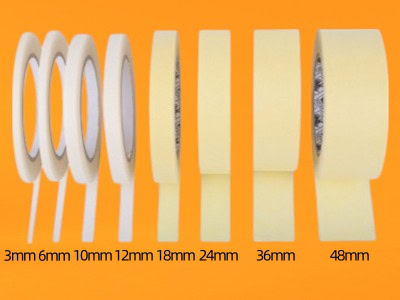
4. Material characteristics
The backing material is critical to the strength, flexibility, and application range of the tape. Common backing materials include BOPP, paper, PVC, and PET, each with its advantages depending on the application.
If you would like to learn more about various tape materials and their specific uses, please refer to our detailed article: 10 Must-Have Types of Tape for Home & Work.
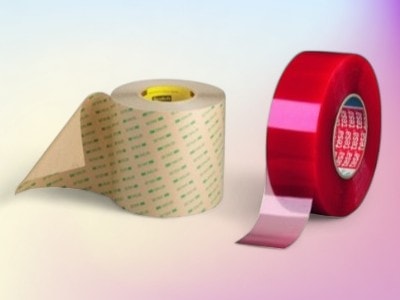
5. Customized needs
You can choose to print your label or brand on the tape to enhance brand recognition.
You can also customize the width and length of the tape to suit different uses, from small office tasks to large packaging jobs.
In addition, you can also choose special colors or printing patterns to match your brand style.

6. Budget and quantity
Match product selection with the customer’s budget range.
Understand the minimum order quantity (MOQ) and delivery time.

FAQ
What is the most common material used to make tapes?
BOPP (Biaxially Oriented Polypropylene) is a widely used material to make tapes, especially for packaging, office, and stationery use.
Why is BOPP widely used?
1. Strong yet lightweight: Offers good tensile strength without adding bulk.
2. Smooth surface: Ideal for printing and coating with adhesives.
3. Resistant to moisture and chemicals: Makes it suitable for packaging and long-term storage.
4. Cost-effective: Affordable and easy to process at a large scale.
What is the difference between hot melt and acrylic adhesives?
| Feature | Hot Melt Adhesive | Acrylic Adhesive |
| Base Material | Synthetic rubber & resins | Acrylic polymer |
| Stickiness | Very strong | Moderate |
| Long-Term Holding Power | Moderate | Excellent |
| UV Resistance | Poor | Excellent |
| Temperature Resistance | Good in cold environments | Good in both hot and cold environments |
| Clarity | Less clear | High clarity |
| Cost | Lower | Higher |
| Best Use | Carton sealing, general packaging | Office tape, storage, outdoor, or sunlight-exposed use |
| Shelf Life | Shorter | Longer |
How to test the quality of tape?
Manufacturers will roll a stainless steel ball on the tape and measure the distance the ball rolls on the tape. If the distance is within a certain range, the quality of the tape is great.
Are acrylic adhesives suitable for outdoor use?
Acrylic adhesives have moderate weather resistance when used outdoors and are suitable for short-term outdoor applications (1-2 years). Their UV and temperature resistance (-20℃ to 80℃) is better than ordinary rubber adhesives. However, performance may deteriorate in long-term outdoor use.
Can I customize the tape with my own logo or design?
Yes, most manufacturers offer custom printing services, including logo branding, color selection, and roll sizing for B2B customers.
Are there any eco-friendly or biodegradable tapes?
1. Paper tape:
Made of kraft paper or recycled paper.
The glue is also environmentally friendly.
It can be directly thrown into the paper recycling after use.
2. Corn tape:
Made of corn starch.
It can be decomposed after being buried in the soil for about half a year.
It is especially suitable for temporary packaging.
3. Improved environmentally friendly tape:
Made of recycled plastic.
Does not contain harmful glue.
It can be recycled with other plastics.
What makes sticky tape sticky?
Sticky tape uses a pressure-sensitive adhesive (PSA) that bonds to surfaces when light pressure is applied. The adhesive is made from special polymers and resins that stay tacky without needing heat or water.
Conclusion
There are so many delicate processes behind a small roll of tape! From the choice of substrate to the formula of glue, from the precision of slitting to the scene of use, every detail of the tape affects its actual performance.
No matter what type of tape you purchase, understanding its production process can make you more confident when choosing the product. And different types of tapes have different uses. I hope you can find the most suitable one.

